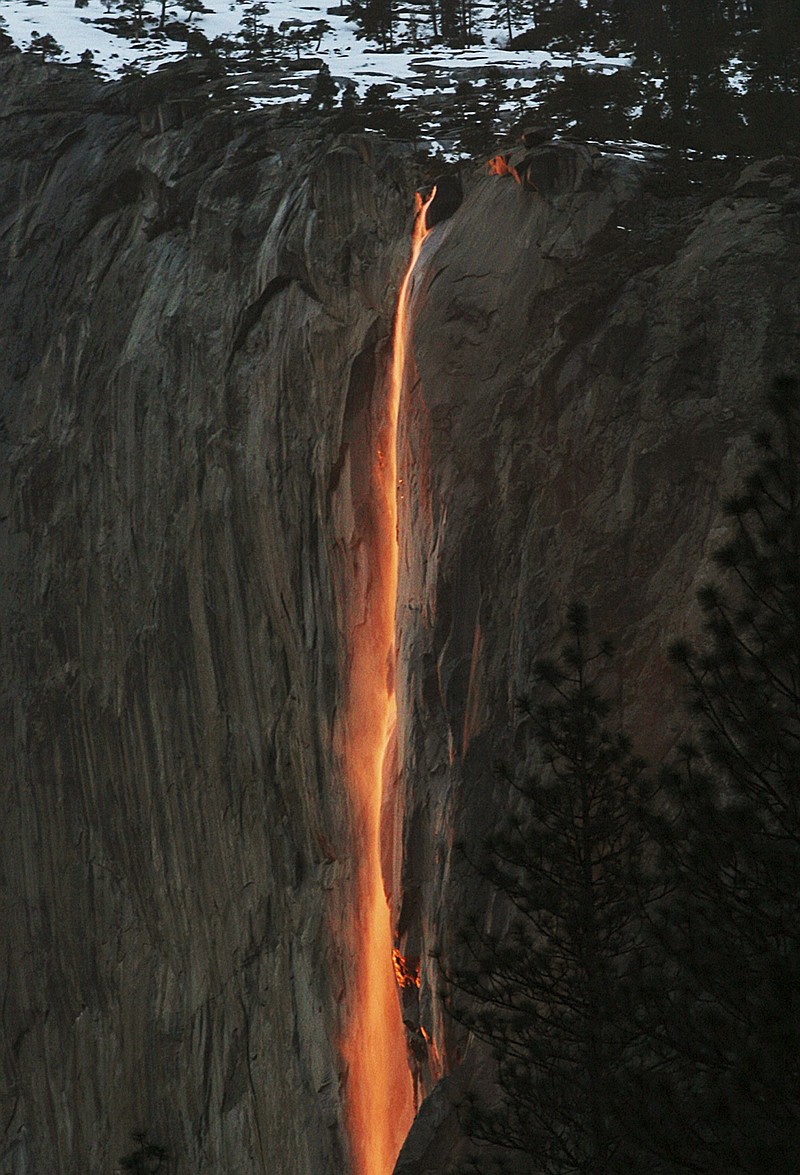YOSEMITE NATIONAL PARK, Calif. (AP) - Mother Nature is again putting on a show at California's Yosemite National Park, where every February the setting sun draws a narrow sliver of light on a waterfall to make it glow like a cascade of molten lava.
The phenomenon known as "firefall" draws scores of photographers to a spot near Horsetail Fall, which flows down the granite face of the park's famed rock formation, El Capitan.
Capturing the sight is a challenge. Horsetail Fall only flows in the winter or spring, when there is enough rain and snow. The sun lights up the fall for only about two minutes at dusk for a few days in February.
Some photographers have had success this year as pictures of the glowing falls are showing up on social media.
